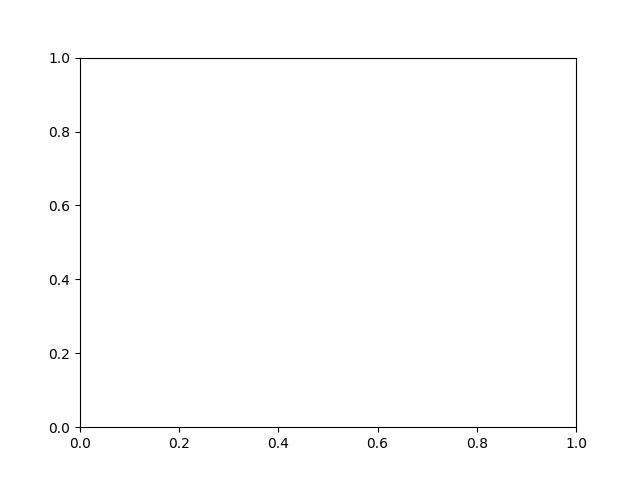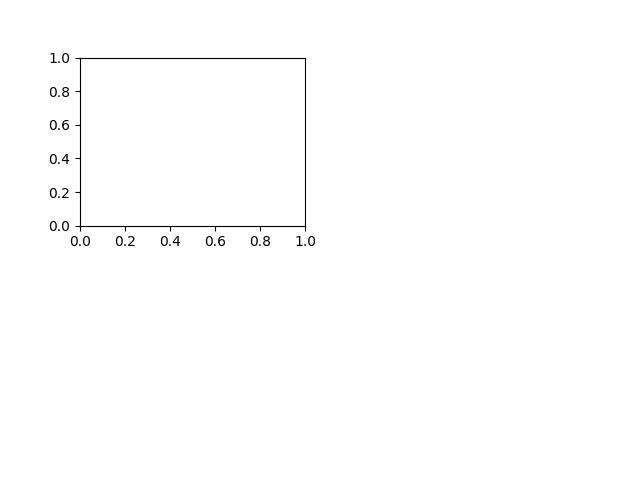graphid.util.nx_utils module¶
- graphid.util.nx_utils.take_column(list_, colx)[source]¶
accepts a list of (indexables) and returns a list of indexables can also return a list of list of indexables if colx is a list
- Parameters:
list_ (list) – list of lists
colx (int or list) – index or key in each sublist get item
- Returns:
list of selected items
- Return type:
- Example0:
>>> list_ = [['a', 'b'], ['c', 'd']] >>> colx = 0 >>> result = take_column(list_, colx) >>> result = ub.urepr(result, nl=False) >>> print(result) ['a', 'c']
- Example1:
>>> list_ = [['a', 'b'], ['c', 'd']] >>> colx = [1, 0] >>> result = take_column(list_, colx) >>> result = ub.urepr(result, nl=False) >>> print(result) [['b', 'a'], ['d', 'c']]
- Example2:
>>> list_ = [{'spam': 'EGGS', 'ham': 'SPAM'}, {'spam': 'JAM', 'ham': 'PRAM'}] >>> # colx can be a key or list of keys as well >>> colx = ['spam'] >>> result = take_column(list_, colx) >>> result = ub.urepr(result, nl=False) >>> print(result) [['EGGS'], ['JAM']]
- graphid.util.nx_utils.list_roll(list_, n)[source]¶
Like numpy.roll for python lists
- Parameters:
list_ (list)
n (int)
- Return type:
References
http://stackoverflow.com/questions/9457832/python-list-rotation
Example
>>> list_ = [1, 2, 3, 4, 5] >>> n = 2 >>> result = list_roll(list_, n) >>> print(result) [4, 5, 1, 2, 3]
- graphid.util.nx_utils.diag_product(s1, s2)[source]¶
Does product, but iterates over the diagonal first
- graphid.util.nx_utils.edges_inside(graph, nodes)[source]¶
Finds edges within a set of nodes Running time is O(len(nodes) ** 2)
- Parameters:
graph (nx.Graph) – an undirected graph
nodes1 (set) – a set of nodes
- graphid.util.nx_utils.edges_outgoing(graph, nodes)[source]¶
Finds edges leaving a set of nodes. Average running time is O(len(nodes) * ave_degree(nodes)) Worst case running time is O(G.number_of_edges()).
- Parameters:
graph (nx.Graph) – a graph
nodes (set) – set of nodes
Example
>>> G = demodata_bridge() >>> nodes = {1, 2, 3, 4} >>> outgoing = edges_outgoing(G, nodes) >>> assert outgoing == {(3, 5), (4, 8)}
- graphid.util.nx_utils.edges_cross(graph, nodes1, nodes2)[source]¶
Finds edges between two sets of disjoint nodes. Running time is O(len(nodes1) * len(nodes2))
- Parameters:
graph (nx.Graph) – an undirected graph
nodes1 (set) – set of nodes disjoint from nodes2
nodes2 (set) – set of nodes disjoint from nodes1.
- graphid.util.nx_utils.edges_between(graph, nodes1, nodes2=None, assume_disjoint=False, assume_dense=True)[source]¶
Get edges between two components or within a single component
- Parameters:
graph (nx.Graph) – the graph
nodes1 (set) – list of nodes
nodes2 (set) – if None it is equivlanet to nodes2=nodes1 (default=None)
assume_disjoint (bool) – skips expensive check to ensure edges arnt returned twice (default=False)
Example
>>> edges = [ >>> (1, 2), (2, 3), (3, 4), (4, 1), (4, 3), # cc 1234 >>> (1, 5), (7, 2), (5, 1), # cc 567 / 5678 >>> (7, 5), (5, 6), (8, 7), >>> ] >>> digraph = nx.DiGraph(edges) >>> graph = nx.Graph(edges) >>> nodes1 = [1, 2, 3, 4] >>> nodes2 = [5, 6, 7] >>> n2 = sorted(edges_between(graph, nodes1, nodes2)) >>> n4 = sorted(edges_between(graph, nodes1)) >>> n5 = sorted(edges_between(graph, nodes1, nodes1)) >>> n1 = sorted(edges_between(digraph, nodes1, nodes2)) >>> n3 = sorted(edges_between(digraph, nodes1)) >>> print('n2 == %r' % (n2,)) >>> print('n4 == %r' % (n4,)) >>> print('n5 == %r' % (n5,)) >>> print('n1 == %r' % (n1,)) >>> print('n3 == %r' % (n3,)) >>> assert n2 == ([(1, 5), (2, 7)]), '2' >>> assert n4 == ([(1, 2), (1, 4), (2, 3), (3, 4)]), '4' >>> assert n5 == ([(1, 2), (1, 4), (2, 3), (3, 4)]), '5' >>> assert n1 == ([(1, 5), (5, 1), (7, 2)]), '1' >>> assert n3 == ([(1, 2), (2, 3), (3, 4), (4, 1), (4, 3)]), '3' >>> n6 = sorted(edges_between(digraph, nodes1 + [6], nodes2 + [1, 2], assume_dense=False)) >>> print('n6 = %r' % (n6,)) >>> n6 = sorted(edges_between(digraph, nodes1 + [6], nodes2 + [1, 2], assume_dense=True)) >>> print('n6 = %r' % (n6,)) >>> assert n6 == ([(1, 2), (1, 5), (2, 3), (4, 1), (5, 1), (5, 6), (7, 2)]), '6'
- graphid.util.nx_utils._edges_between_dense(graph, nodes1, nodes2=None, assume_disjoint=False)[source]¶
The dense method is where we enumerate all possible edges and just take the ones that exist (faster for very dense graphs)
- graphid.util.nx_utils._edges_inside_lower(graph, both_adj)[source]¶
finds lower triangular edges inside the nodes
- graphid.util.nx_utils._edges_inside_upper(graph, both_adj)[source]¶
finds upper triangular edges inside the nodes
- graphid.util.nx_utils._edges_between_disjoint(graph, only1_adj, only2)[source]¶
finds edges between disjoint nodes
- graphid.util.nx_utils._edges_between_sparse(graph, nodes1, nodes2=None, assume_disjoint=False)[source]¶
In this version we check the intersection of existing edges and the edges in the second set (faster for sparse graphs)
- graphid.util.nx_utils.demodata_tarjan_bridge()[source]¶
Example
>>> from graphid import util >>> G = demodata_tarjan_bridge() >>> # xdoc: +REQUIRES(--show) >>> util.show_nx(G) >>> util.show_if_requested()

- graphid.util.nx_utils.random_k_edge_connected_graph(size, k, p=0.1, rng=None)[source]¶
Super hacky way of getting a random k-connected graph
Example
>>> from graphid import util >>> size, k, p = 25, 3, .1 >>> rng = util.ensure_rng(0) >>> gs = [] >>> for x in range(4): >>> G = random_k_edge_connected_graph(size, k, p, rng) >>> gs.append(G) >>> # xdoc: +REQUIRES(--show) >>> pnum_ = util.PlotNums(nRows=2, nSubplots=len(gs)) >>> fnum = 1 >>> for g in gs: >>> util.show_nx(g, fnum=fnum, pnum=pnum_())

- graphid.util.nx_utils.nx_delete_node_attr(graph, name, nodes=None)[source]¶
Removes node attributes
Doctest
>>> G = nx.karate_club_graph() >>> nx.set_node_attributes(G, name='foo', values='bar') >>> datas = nx.get_node_attributes(G, 'club') >>> assert len(nx.get_node_attributes(G, 'club')) == 34 >>> assert len(nx.get_node_attributes(G, 'foo')) == 34 >>> nx_delete_node_attr(G, ['club', 'foo'], nodes=[1, 2]) >>> assert len(nx.get_node_attributes(G, 'club')) == 32 >>> assert len(nx.get_node_attributes(G, 'foo')) == 32 >>> nx_delete_node_attr(G, ['club']) >>> assert len(nx.get_node_attributes(G, 'club')) == 0 >>> assert len(nx.get_node_attributes(G, 'foo')) == 32
- graphid.util.nx_utils.nx_delete_edge_attr(graph, name, edges=None)[source]¶
Removes an attributes from specific edges in the graph
Doctest
>>> G = nx.karate_club_graph() >>> nx.set_edge_attributes(G, name='spam', values='eggs') >>> nx.set_edge_attributes(G, name='foo', values='bar') >>> assert len(nx.get_edge_attributes(G, 'spam')) == 78 >>> assert len(nx.get_edge_attributes(G, 'foo')) == 78 >>> nx_delete_edge_attr(G, ['spam', 'foo'], edges=[(1, 2)]) >>> assert len(nx.get_edge_attributes(G, 'spam')) == 77 >>> assert len(nx.get_edge_attributes(G, 'foo')) == 77 >>> nx_delete_edge_attr(G, ['spam']) >>> assert len(nx.get_edge_attributes(G, 'spam')) == 0 >>> assert len(nx.get_edge_attributes(G, 'foo')) == 77
Doctest
>>> G = nx.MultiGraph() >>> G.add_edges_from([(1, 2), (2, 3), (3, 4), (4, 5), (4, 5), (1, 2)]) >>> nx.set_edge_attributes(G, name='spam', values='eggs') >>> nx.set_edge_attributes(G, name='foo', values='bar') >>> assert len(nx.get_edge_attributes(G, 'spam')) == 6 >>> assert len(nx.get_edge_attributes(G, 'foo')) == 6 >>> nx_delete_edge_attr(G, ['spam', 'foo'], edges=[(1, 2, 0)]) >>> assert len(nx.get_edge_attributes(G, 'spam')) == 5 >>> assert len(nx.get_edge_attributes(G, 'foo')) == 5 >>> nx_delete_edge_attr(G, ['spam']) >>> assert len(nx.get_edge_attributes(G, 'spam')) == 0 >>> assert len(nx.get_edge_attributes(G, 'foo')) == 5
- graphid.util.nx_utils.nx_gen_node_values(G, key, nodes, default=NoParam)[source]¶
Generates attributes values of specific nodes
- graphid.util.nx_utils.nx_gen_node_attrs(G, key, nodes=None, default=NoParam, on_missing='error', on_keyerr='default')[source]¶
Improved generator version of nx.get_node_attributes
- Parameters:
on_missing (str) – Strategy for handling nodes missing from G. Can be {‘error’, ‘default’, ‘filter’}. defaults to ‘error’.
on_keyerr (str) – Strategy for handling keys missing from node dicts. Can be {‘error’, ‘default’, ‘filter’}. defaults to ‘default’ if default is specified, otherwise defaults to ‘error’.
Notes
- strategies are:
error - raises an error if key or node does not exist default - returns node, but uses value specified by default filter - skips the node
Example
>>> # ENABLE_DOCTEST >>> from graphid import util >>> G = nx.Graph([(1, 2), (2, 3)]) >>> nx.set_node_attributes(G, name='part', values={1: 'bar', 3: 'baz'}) >>> nodes = [1, 2, 3, 4] >>> # >>> assert len(list(nx_gen_node_attrs(G, 'part', default=None, on_missing='error', on_keyerr='default'))) == 3 >>> assert len(list(nx_gen_node_attrs(G, 'part', default=None, on_missing='error', on_keyerr='filter'))) == 2 >>> assert_raises(KeyError, list, nx_gen_node_attrs(G, 'part', on_missing='error', on_keyerr='error')) >>> # >>> assert len(list(nx_gen_node_attrs(G, 'part', nodes, default=None, on_missing='filter', on_keyerr='default'))) == 3 >>> assert len(list(nx_gen_node_attrs(G, 'part', nodes, default=None, on_missing='filter', on_keyerr='filter'))) == 2 >>> assert_raises(KeyError, list, nx_gen_node_attrs(G, 'part', nodes, on_missing='filter', on_keyerr='error')) >>> # >>> assert len(list(nx_gen_node_attrs(G, 'part', nodes, default=None, on_missing='default', on_keyerr='default'))) == 4 >>> assert len(list(nx_gen_node_attrs(G, 'part', nodes, default=None, on_missing='default', on_keyerr='filter'))) == 2 >>> assert_raises(KeyError, list, nx_gen_node_attrs(G, 'part', nodes, on_missing='default', on_keyerr='error'))
Example
>>> # DISABLE_DOCTEST >>> # ALL CASES >>> from graphid import util >>> G = nx.Graph([(1, 2), (2, 3)]) >>> nx.set_node_attributes(G, name='full', values={1: 'A', 2: 'B', 3: 'C'}) >>> nx.set_node_attributes(G, name='part', values={1: 'bar', 3: 'baz'}) >>> nodes = [1, 2, 3, 4] >>> attrs = dict(nx_gen_node_attrs(G, 'full')) >>> input_grid = { >>> 'nodes': [None, (1, 2, 3, 4)], >>> 'key': ['part', 'full'], >>> 'default': [ub.NoParam, None], >>> } >>> inputs = util.all_dict_combinations(input_grid) >>> kw_grid = { >>> 'on_missing': ['error', 'default', 'filter'], >>> 'on_keyerr': ['error', 'default', 'filter'], >>> } >>> kws = util.all_dict_combinations(kw_grid) >>> for in_ in inputs: >>> for kw in kws: >>> kw2 = ub.dict_union(kw, in_) >>> #print(kw2) >>> on_missing = kw['on_missing'] >>> on_keyerr = kw['on_keyerr'] >>> if on_keyerr == 'default' and in_['default'] is ub.NoParam: >>> on_keyerr = 'error' >>> will_miss = False >>> will_keyerr = False >>> if on_missing == 'error': >>> if in_['key'] == 'part' and in_['nodes'] is not None: >>> will_miss = True >>> if in_['key'] == 'full' and in_['nodes'] is not None: >>> will_miss = True >>> if on_keyerr == 'error': >>> if in_['key'] == 'part': >>> will_keyerr = True >>> if on_missing == 'default': >>> if in_['key'] == 'full' and in_['nodes'] is not None: >>> will_keyerr = True >>> want_error = will_miss or will_keyerr >>> gen = nx_gen_node_attrs(G, **kw2) >>> try: >>> attrs = list(gen) >>> except KeyError: >>> if not want_error: >>> raise AssertionError('should not have errored') >>> else: >>> if want_error: >>> raise AssertionError('should have errored')
- graphid.util.nx_utils.assert_raises(ex_type, func, *args, **kwargs)[source]¶
Checks that a function raises an error when given specific arguments.
- Parameters:
ex_type (Exception) – exception type
func (callable) – live python function
Example
>>> ex_type = AssertionError >>> func = len >>> assert_raises(ex_type, assert_raises, ex_type, func, []) >>> assert_raises(ValueError, [].index, 0)
- graphid.util.nx_utils.bfs_conditional(G, source, reverse=False, keys=True, data=False, yield_nodes=True, yield_if=None, continue_if=None, visited_nodes=None, yield_source=False)[source]¶
Produce edges in a breadth-first-search starting at source, but only return nodes that satisfiy a condition, and only iterate past a node if it satisfies a different condition.
conditions are callables that take (G, child, edge) and return true or false
Example
>>> import networkx as nx >>> G = nx.Graph() >>> G.add_edges_from([(1, 2), (1, 3), (2, 3), (2, 4)]) >>> continue_if = lambda G, child, edge: True >>> result = list(bfs_conditional(G, 1, yield_nodes=False)) >>> print(result) [(1, 2), (1, 3), (2, 1), (2, 3), (2, 4), (3, 1), (3, 2), (4, 2)]
Example
>>> import networkx as nx >>> G = nx.Graph() >>> continue_if = lambda G, child, edge: (child % 2 == 0) >>> yield_if = lambda G, child, edge: (child % 2 == 1) >>> G.add_edges_from([(0, 1), (1, 3), (3, 5), (5, 10), >>> (4, 3), (3, 6), >>> (0, 2), (2, 4), (4, 6), (6, 10)]) >>> result = list(bfs_conditional(G, 0, continue_if=continue_if, >>> yield_if=yield_if)) >>> print(result) [1, 3, 5]
- graphid.util.nx_utils.nx_gen_edge_attrs(G, key, edges=None, default=NoParam, on_missing='error', on_keyerr='default')[source]¶
Improved generator version of nx.get_edge_attributes
- Parameters:
on_missing (str) – Strategy for handling nodes missing from G. Can be {‘error’, ‘default’, ‘filter’}. defaults to ‘error’. is on_missing is not error, then we allow any edge even if the endpoints are not in the graph.
on_keyerr (str) – Strategy for handling keys missing from node dicts. Can be {‘error’, ‘default’, ‘filter’}. defaults to ‘default’ if default is specified, otherwise defaults to ‘error’.
CommandLine
python -m graphid.util.nx_utils nx_gen_edge_attrs
Example
>>> from graphid import util >>> from functools import partial >>> G = nx.Graph([(1, 2), (2, 3), (3, 4)]) >>> nx.set_edge_attributes(G, name='part', values={(1, 2): 'bar', (2, 3): 'baz'}) >>> edges = [(1, 2), (2, 3), (3, 4), (4, 5)] >>> func = partial(nx_gen_edge_attrs, G, 'part', default=None) >>> # >>> assert len(list(func(on_missing='error', on_keyerr='default'))) == 3 >>> assert len(list(func(on_missing='error', on_keyerr='filter'))) == 2 >>> util.assert_raises(KeyError, list, func(on_missing='error', on_keyerr='error')) >>> # >>> assert len(list(func(edges, on_missing='filter', on_keyerr='default'))) == 3 >>> assert len(list(func(edges, on_missing='filter', on_keyerr='filter'))) == 2 >>> util.assert_raises(KeyError, list, func(edges, on_missing='filter', on_keyerr='error')) >>> # >>> assert len(list(func(edges, on_missing='default', on_keyerr='default'))) == 4 >>> assert len(list(func(edges, on_missing='default', on_keyerr='filter'))) == 2 >>> util.assert_raises(KeyError, list, func(edges, on_missing='default', on_keyerr='error'))
- graphid.util.nx_utils.nx_gen_edge_values(G, key, edges=None, default=NoParam, on_missing='error', on_keyerr='default')[source]¶
Generates attributes values of specific edges
- Parameters:
on_missing (str) – Strategy for handling nodes missing from G. Can be {‘error’, ‘default’}. defaults to ‘error’.
on_keyerr (str) – Strategy for handling keys missing from node dicts. Can be {‘error’, ‘default’}. defaults to ‘default’ if default is specified, otherwise defaults to ‘error’.